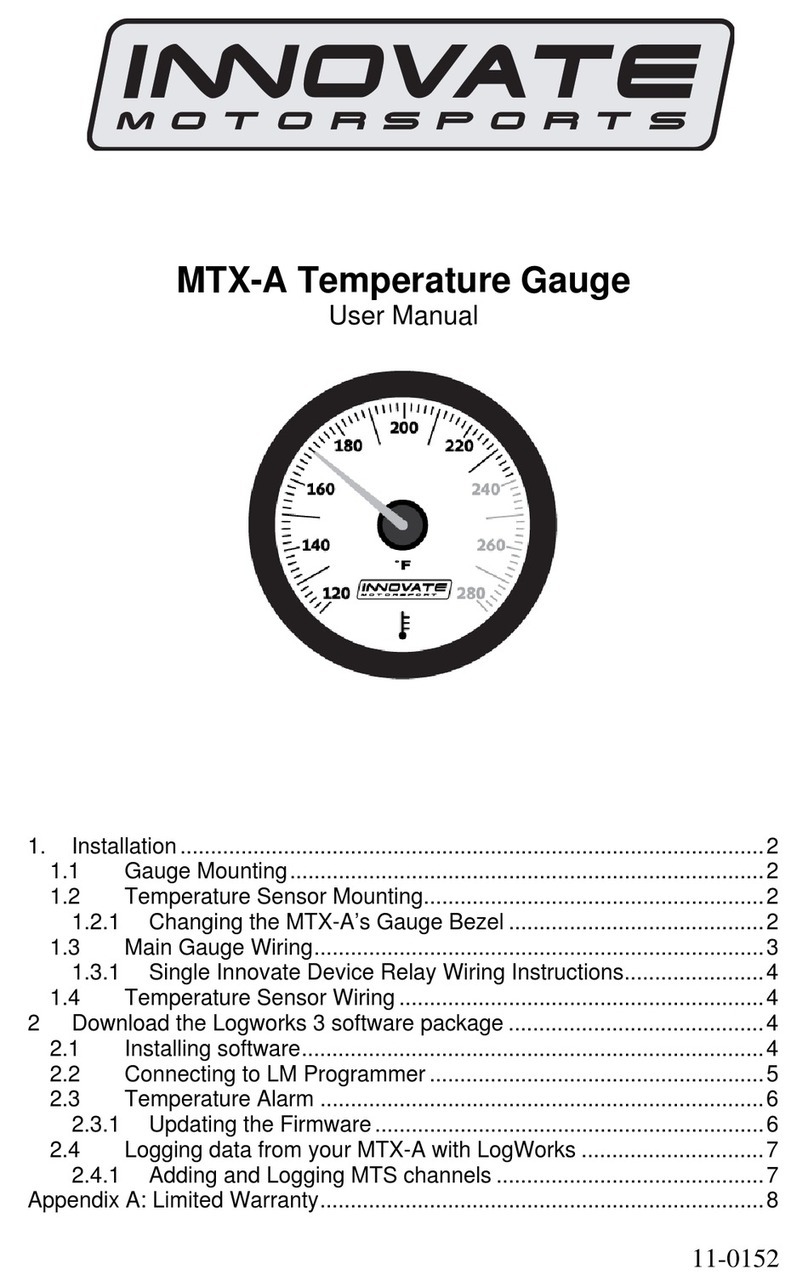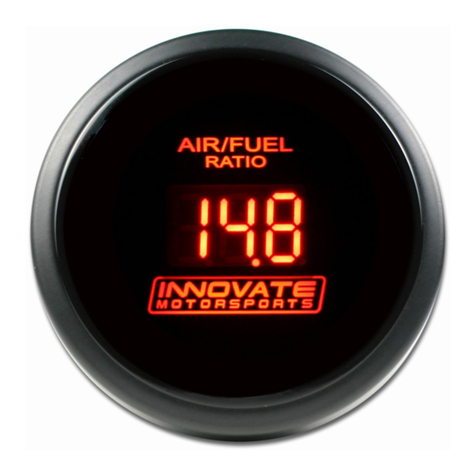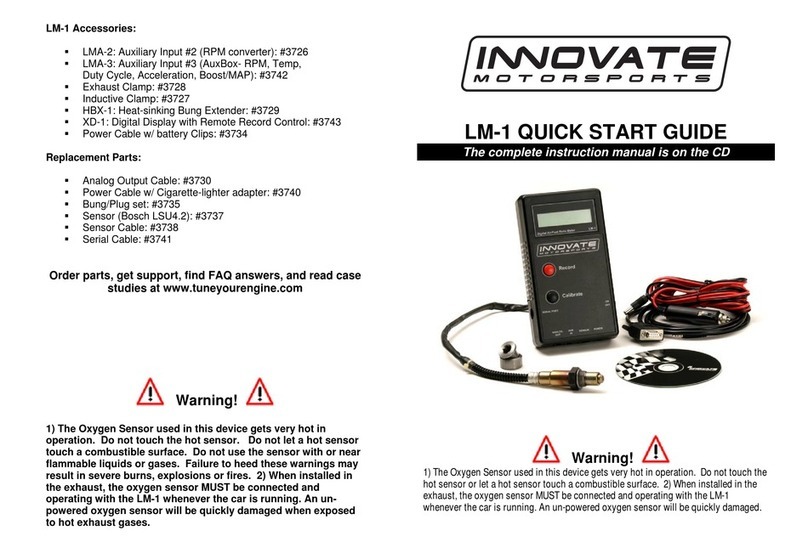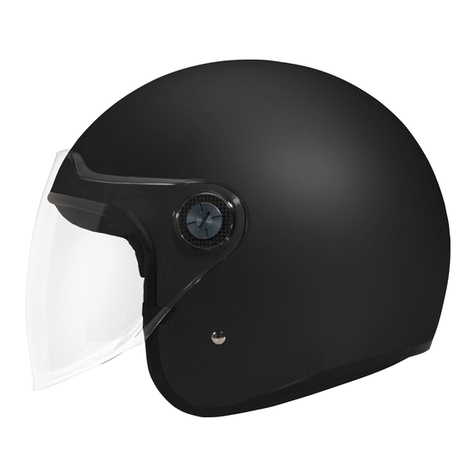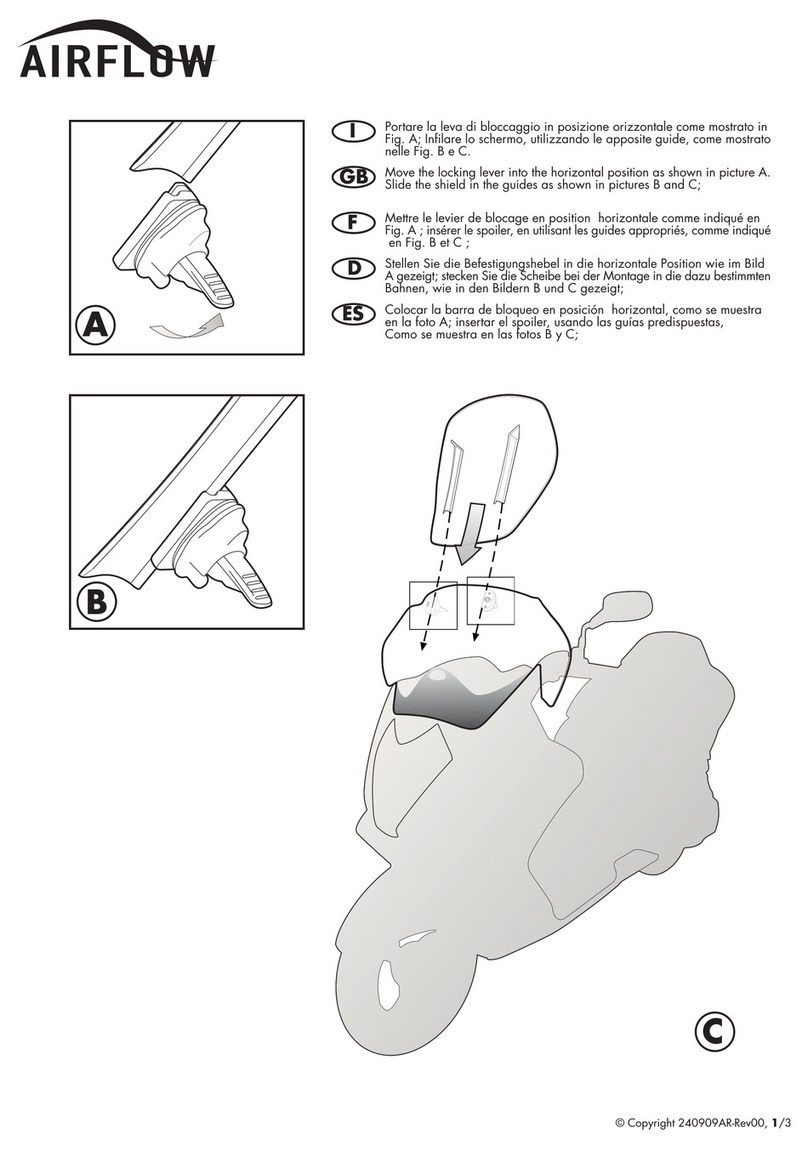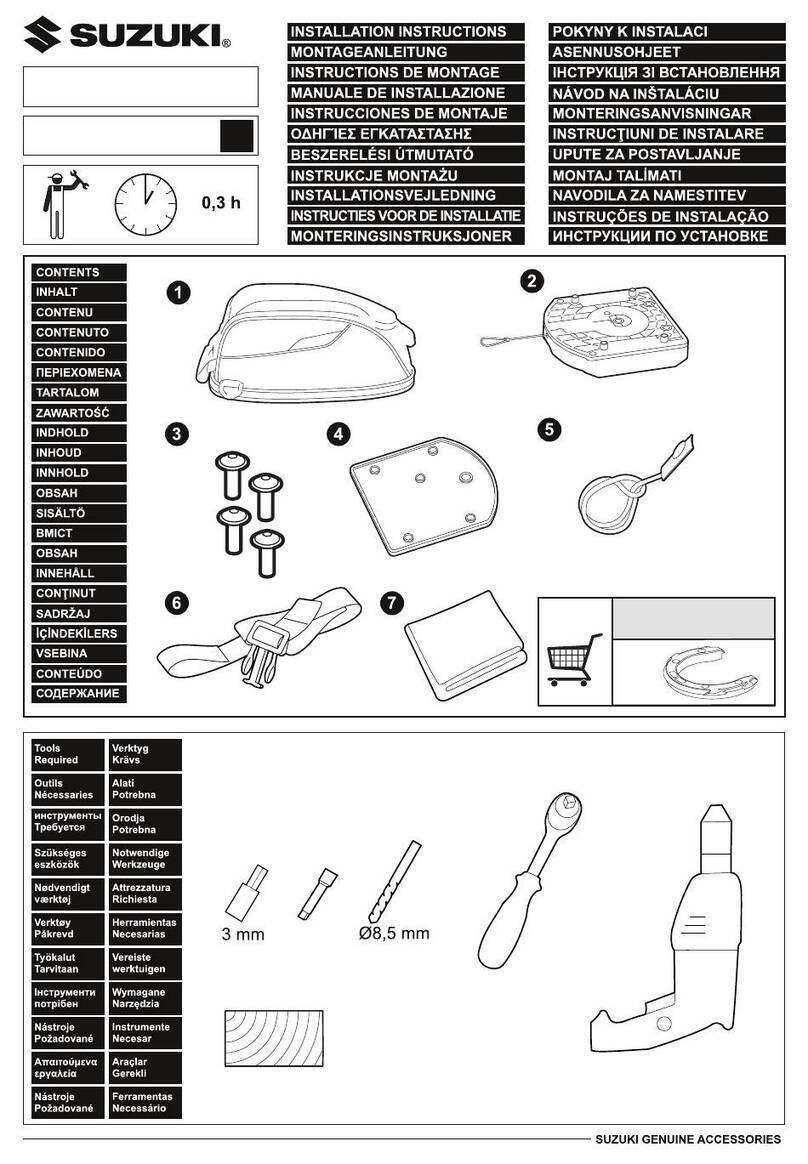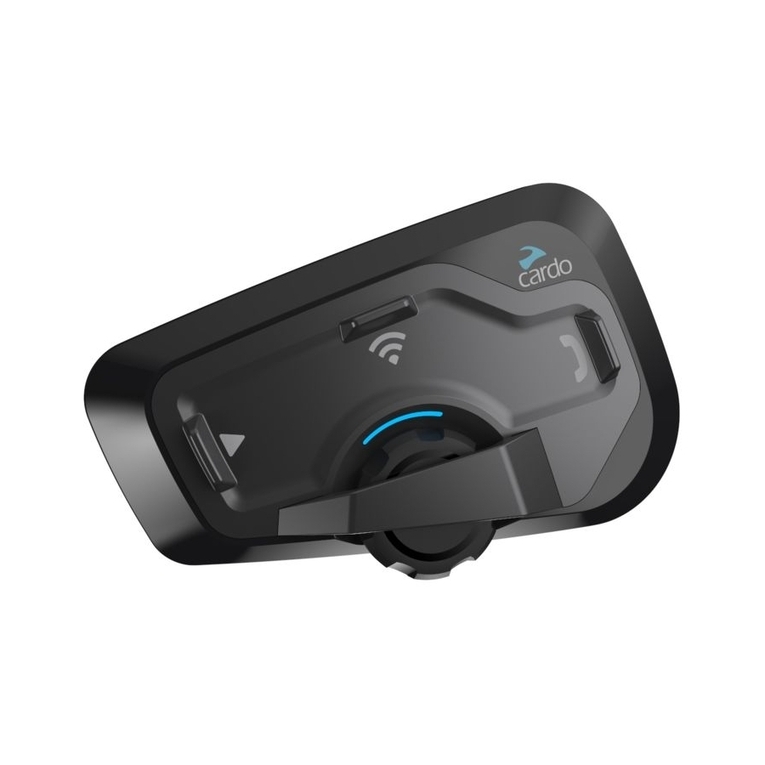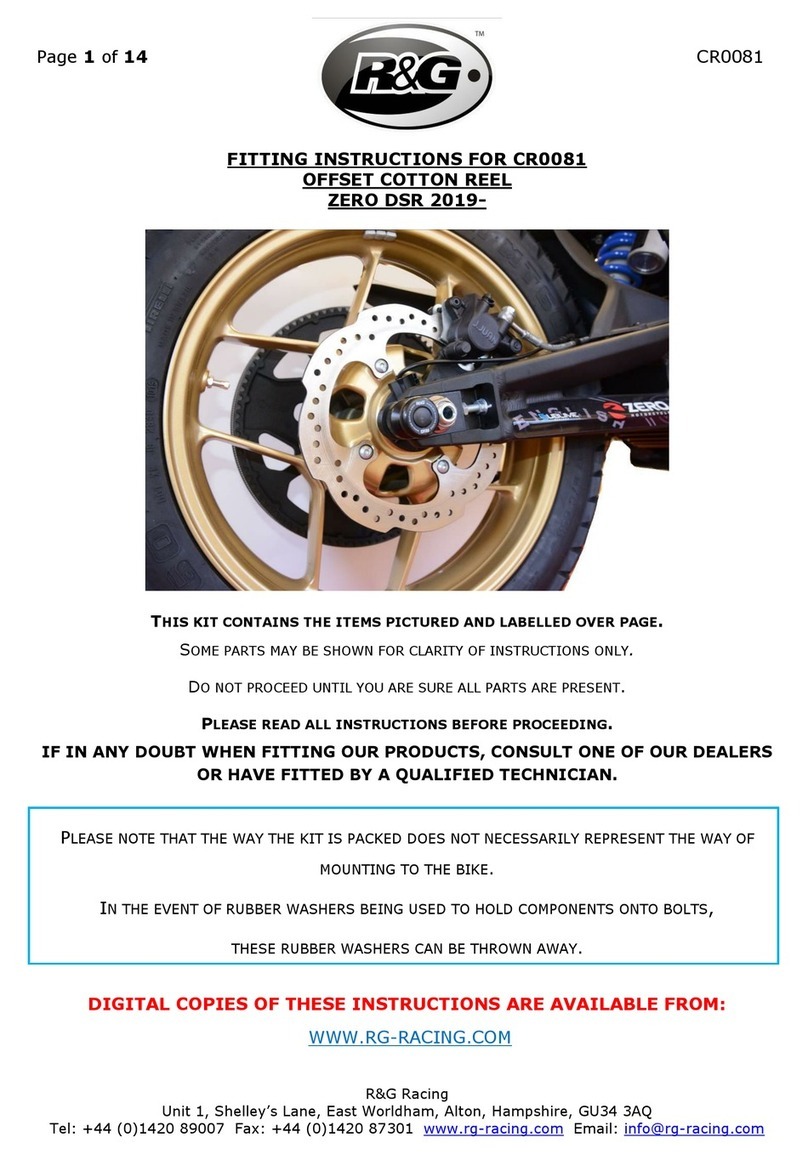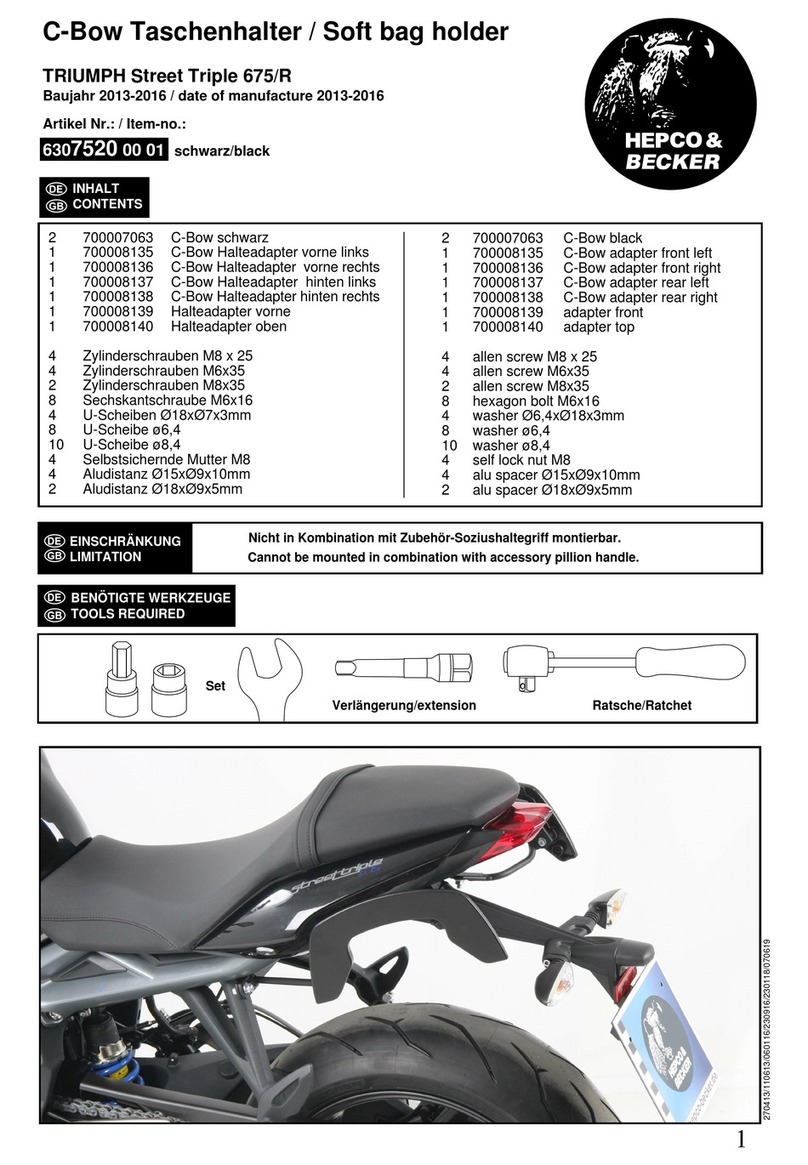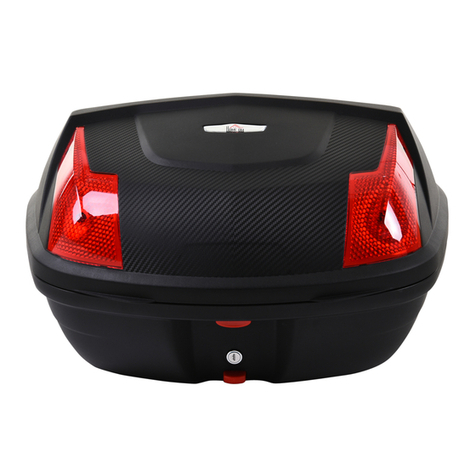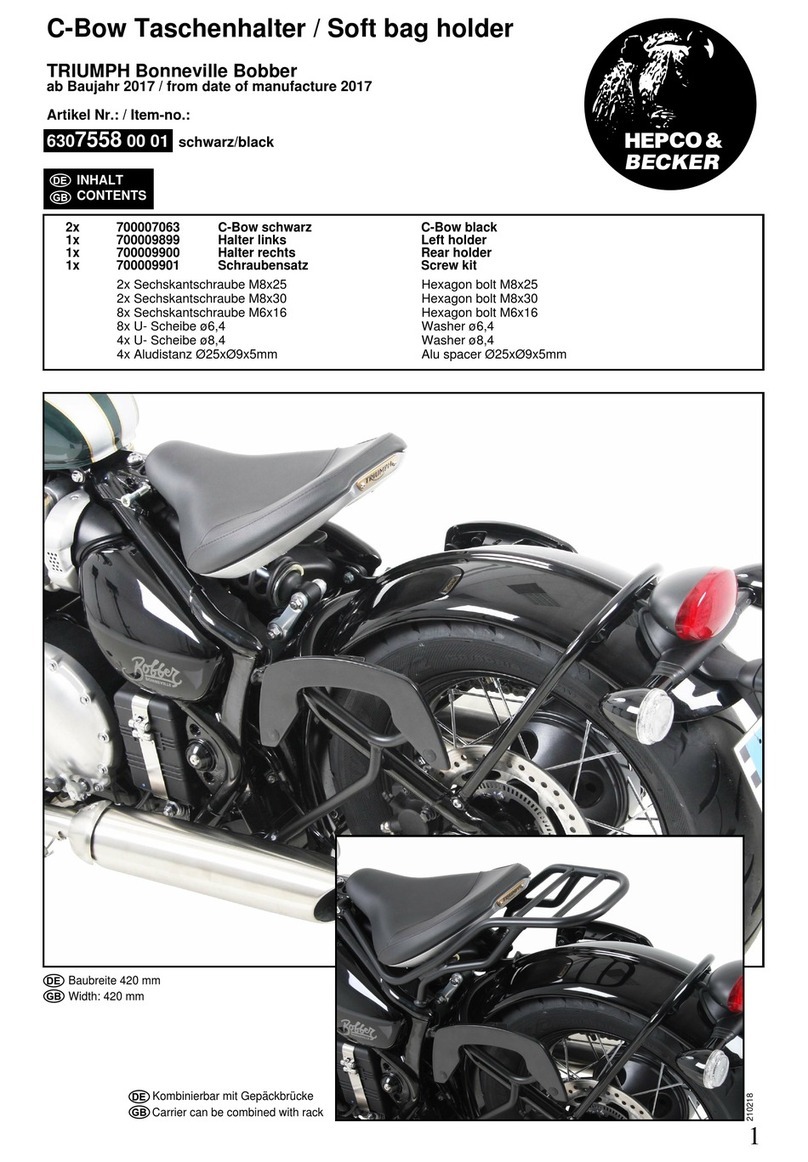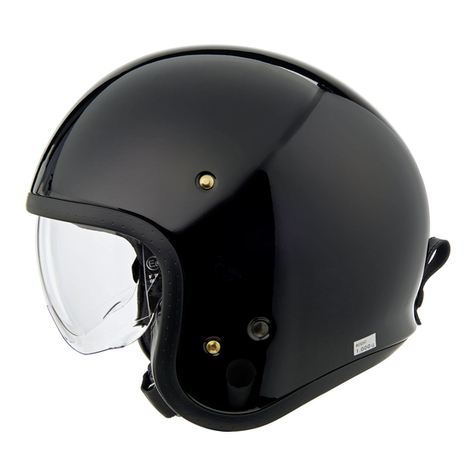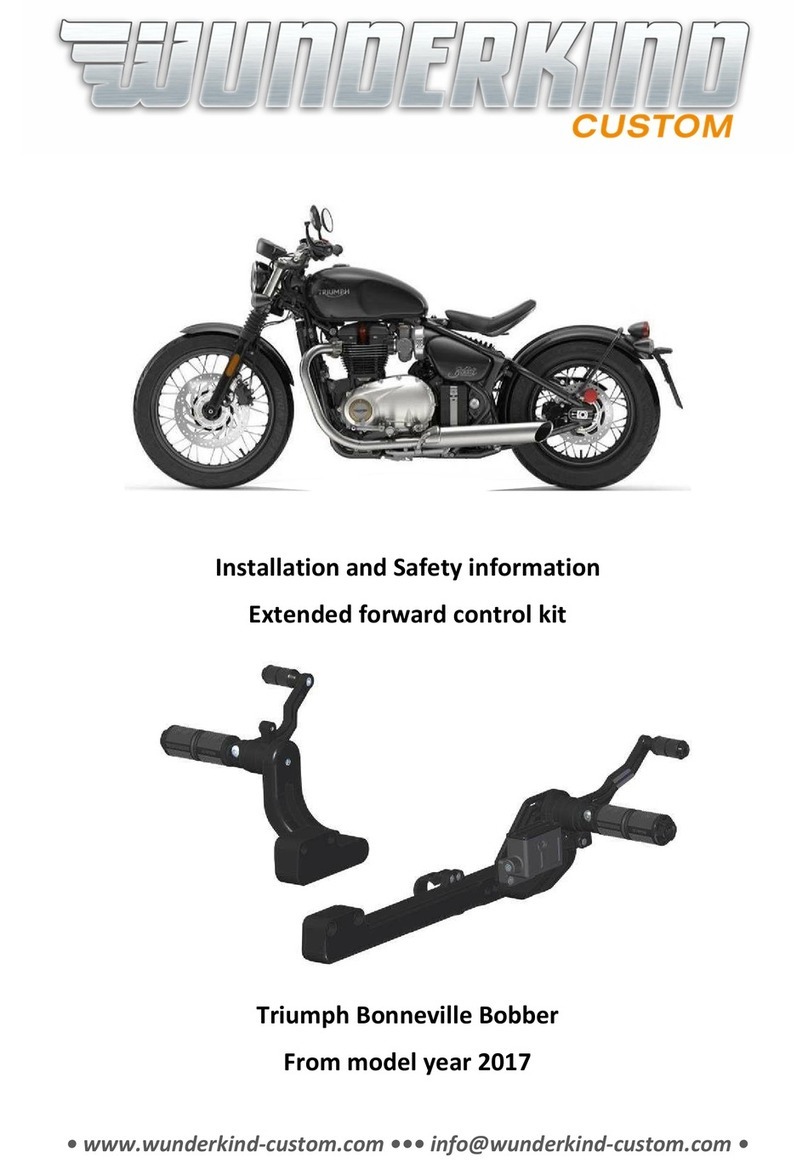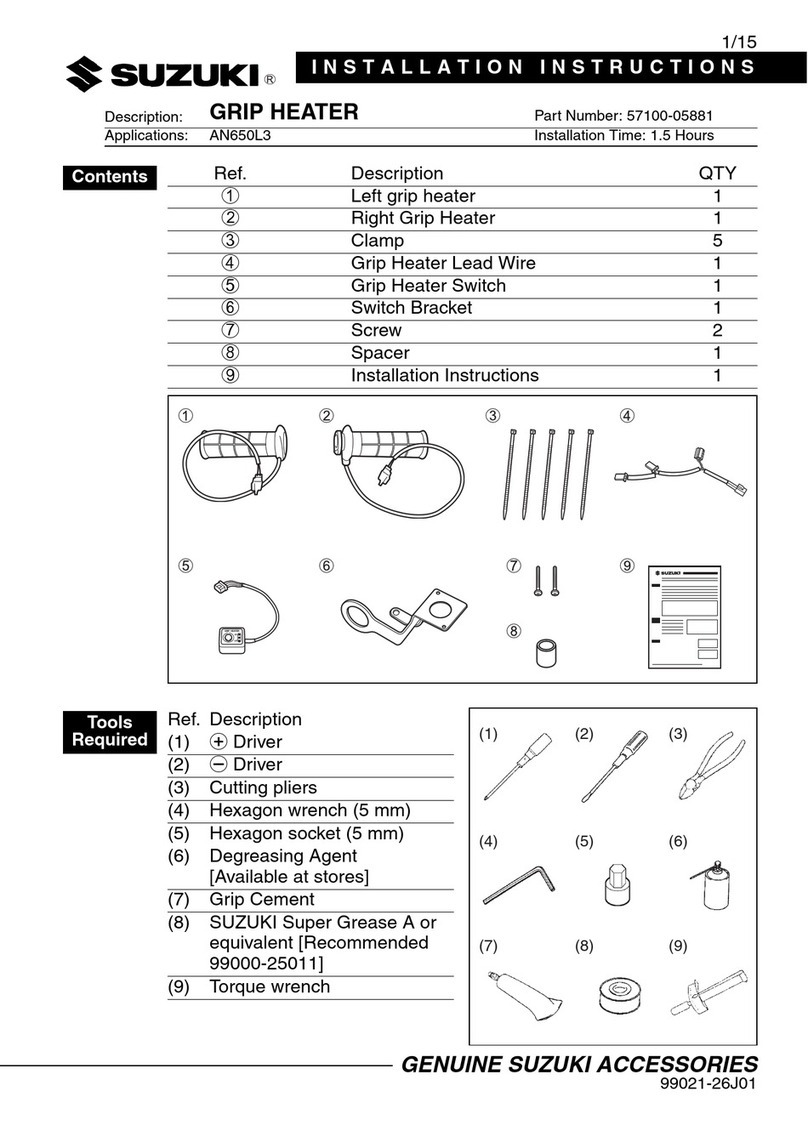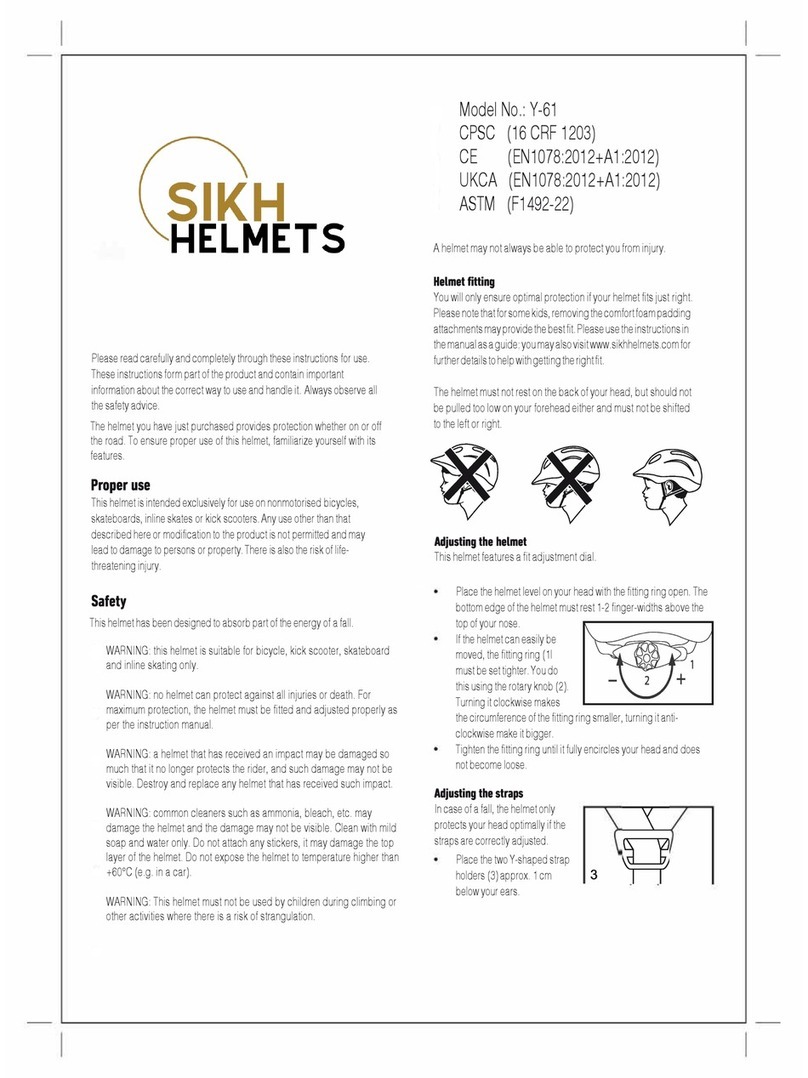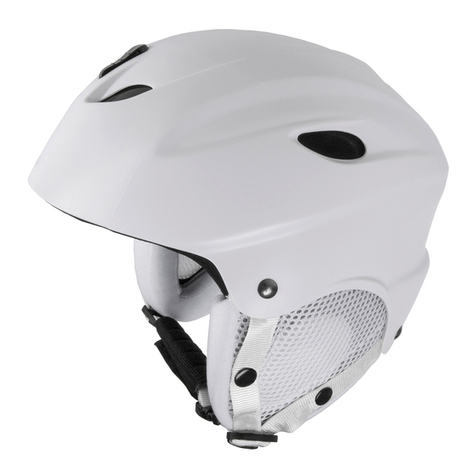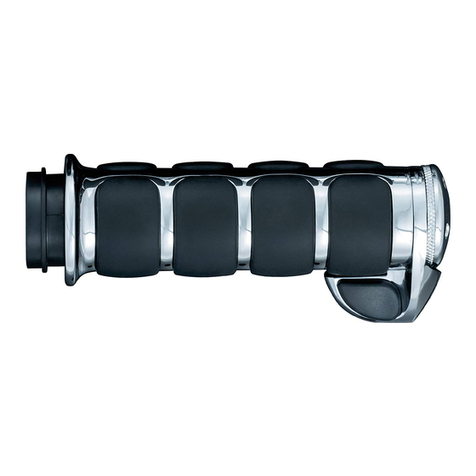Innovate Motorsports MTX-L User manual

MTX-L
Digital Air/Fuel Ratio Gauge
User Manual
Warning!
The Oxygen Sensor used in this device gets very hot in operation.
Do not touch a hot sensor. Do not let a hot sensor touch a combustible surface.
Do not use the sensor with or near flammable liquids or gases. Failure to heed
these warnings may result in severe burns, explosions, fires, or other dangerous
events.
When installed in the exhaust, the oxygen sensor MUST be connected and
operating with the MTX-L whenever the car is running. An un-powered oxygen
sensor can be quickly damaged when exposed to hot exhaust gases.

MTX-L_Manual.doc
2
TABLE OF CONTENTS
1MTX-L ....................................................................................................................................................3
2Installation..............................................................................................................................................4
2.1 Wiring...............................................................................................................................................4
2.2 Mounting and Routing......................................................................................................................4
2.3 Sensor Placement............................................................................................................................5
2.4 Sensor Calibration............................................................................................................................6
2.4.1 Calibration Schedule...............................................................................................................7
2.5 Changing the MTX-L’s gauge face and/or bezel .............................................................................7
3Software (LogWorks 3 and LM Programmer)........................................................................................8
3.1 Installing software ............................................................................................................................8
3.2 Connecting to LM Programmer........................................................................................................8
3.2.1 Analog Outputs........................................................................................................................9
3.2.2 Advanced output programming.............................................................................................10
3.2.3 Customizing your fuel type....................................................................................................11
3.2.4 Customizing your display range............................................................................................11
3.2.5 Updating the firmware...........................................................................................................12
3.3 Logging data from your MTX-L with LogWorks .............................................................................12
4Wiring Analog Outputs.........................................................................................................................12
5Tips, Tricks, & Troubleshooting ...........................................................................................................13
5.1 Air/Fuel and Lambda......................................................................................................................13
5.2 General measurement requirements.............................................................................................14
5.3 Vehicles with ‘smog-pumps’...........................................................................................................14
5.4 Single Cylinder Engines.................................................................................................................14
5.5 Diesel Engines...............................................................................................................................14
5.6 Connecting the MTX-L to simulate a narrow band oxygen sensor................................................15
Appendix A: Specifications..........................................................................................................................17
Appendix B: Limited Warranty ....................................................................................................................18
Appendix C: Connectors.............................................................................................................................19
Appendix E: Error Codes and Troubleshooting Tips ..................................................................................20
Page 4

MTX-L_Manual.doc
3
1 MTX-L
The MTX-L is an integrated gauge and controller for wideband AFR (lambda)
measurements. Although it can be operated stand alone, it has digital I/O for integration
with other MTS compatible products and two configurable analog outputs for integration
with ECU’s and 3rd party data loggers. The following views will help you get familiar with
the unit.
Needle Bar
Status Light
Numeric Display
Mounting Bracket
Serial Connectors
Wiring Loom
Sensor Connector

MTX-L_Manual.doc
4
2 Installation
2.1 Wiring
The MTX-L has 5 stripped wire ends.
1. Connect the RED wire to a switched 12V source. A switched 12V source goes on as
soon as the ignition on the car is on. Make sure the connection is fused with a
minimum fuse size of 3A.
2. Connect the BLACK wire to a ground source. Avoid noisy ground sources, such as
grounds used for radio and or ignition sources.
3. Connect the WHITE wire to a headlight power wire (a wire that supplies current to
the headlights). This enables the display to dim for better nighttime viewing. DO
NOT CONNECT THIS WIRE TO THE HEADLIGHT DIMMING WIRE. Connection to
this rheostat type of switch will cause the gauge to malfunction. If you chose not to
utilize the dimming feature, connect the WHITE wire to ground.
4. Optionally, the YELLOW (Analog out 1) and/or BROWN (Analog out 2) can be
connected to the analog inputs of other devices such as data loggers or ECUs. If
either one or both of these wires are not being used isolate and tape the wire(s) out
of the way. The default analog outputs are as follows: Analog output one (yellow) is
0V = 7.35 AFR and 5V = 22.39 AFR.Analog output two (brown) is 1.1V = 14 AFR
and .1V = 15 AFR. This is a simulated narrowband signal.
2.2 Mounting and Routing
The MTX-L gauge fits in any standard 2 1/16” (52mm) gauge pod. Mounting of the
gauge should be done in such a manner that the cables are not being forcefully pulled
from the gauge itself. Route the sensor cable avoiding contact with the exhaust pipe
and other hot sources that could melt the cable. Also avoid routing the sensor cable
near ignition components or other sources of RF (radio frequency) and EMI
(Electromagnetic interference) noise.
The MTX-L gauge is splash resistant (not water proof) and can be mounted so
that it is exposed to the outdoor elements. The MTX-L should not be submerged and
special consideration should be taken to protect the gauge from direct water spray
(water coming from a pressurized source.) When replacing the bezel and/or gauge face
verify that the o-ring is properly seated.

MTX-L_Manual.doc
5
2.3 Sensor Placement
Your MTX-L gauge kit includes a 1” bung. This bung is supplied to best prolong the life
of your sensor since it will allow the sensor to sit flush with the exhaust pipe. Using a
bung is the preferred method for mounting the O2sensor for both catalytic and non-
catalytic cars.
On CATALYTIC CONVERTER equipped vehicles:
Install the oxygen sensor’s bung upstream from the catalytic converter (a bung is
included in the MTX-L kit). The bung must be installed in the exhaust pipe at the side
or on top, NOT on the bottom of the exhaust pipe. Any decent muffler or exhaust
shop can do this for you. The wide-band oxygen sensor is then installed into the
bung to take a reading. The ideal position is between 10:00 and 2:00 position.
On NON-CATALYTIC converter vehicles:
You have the option with non-catalytic cars to also use an exhaust clamp as
described below. Use of a bung is the preferred method for mounting the 02sensor
for both catalytic and non-catalytic cars.
On TURBO CHARGED vehicles:
Install the bung downstream from the turbo but before the catalytic converter. The
high exhaust pressure before the turbo interferes with the lambda measurement and
the high exhaust temperatures encountered there can damage the sensor.
Alternatively you can also use the optional exhaust clamp (part number 3728) to sample
exhaust gases at the end of the tail pipe.
Do NOT install the Bung below the 3 o'clock or 9 o'clock position. Condensation
can form in the exhaust pipe and permanently damage the sensor. 6 o’clock is the
absolute worst position to mount the sensor.

MTX-L_Manual.doc
6
Wide band oxygen sensors, like the one shipped with the MTX-L, are designed
to work with unleaded gasoline. Use with leaded gasoline will significantly reduce the
lifespan of the sensor. The reduction is directly proportional to the metal content of the
fuel and the tune of the engine.
WHEN INSTALLED IN THE EXHAUST, THE OXYGEN SENSOR MUST BE
CONNECTED AND OPERATING WITH THE MTX-L WHENEVER THE CAR IS
RUNNING. AN UN-POWERED OXYGEN SENSOR WILL BE DAMAGED WHEN
EXPOSED TO EXHAUST GAS IF NOT PROPERLY POWERED.
The maximum temperature of the sensor at the bung (the sensor hexagon)
should not exceed 500 oC or 900 oF. If these temperatures are exceeded in your
application you should install the Innovate Motorsports Heat-Sink Bung extender (P/N
3729 HBX-1).
It is NOT a good idea to do a sensor prewarm-up prior to starting the engine.
Depending on the climate and the sensor position in the exhaust, condensation can
form in the exhaust pipes. This condensation could then be blown by the exhaust
stream against the hot sensor when the car is started. The resulting heat shock can
permanently damage the sensor.
2.4 Sensor Calibration
Once the unit has been wired and a suitable location has been found for both the gauge
and the sensor it is time to do the sensor calibration. Innovate Motorsports’ ‘Direct
Digital’ wideband measurement principal allows you to calibrate the sensor to
compensate for sensor wear. This procedure takes just a few moments and it will insure
the most accurate readings throughout the oxygen sensor’s life. This procedure is
required anytime a NEW oxygen sensor is installed.
The calibration procedure requires that the oxygen sensor be in free air, not in the
exhaust. Important: Just because a vehicle is not running does not mean that the
exhaust system is free of gases.
1. With the sensor disconnected, apply power to the MTX-L.
When power is applied, all three digits will light up and the needle bar will sweep
once through all LEDs. Then the status light will turn red and the numeric display will
read “E2”. This is an error code, indicating that no sensor is detected. Leave unit
powered on for minimum 30 seconds.

MTX-L_Manual.doc
7
2. Power down the MTX-L and attach the oxygen sensor using the cable provided.
Again, make sure that the sensor is in free air (not in the exhaust).
3. Power up the MTX-L.
Again, the display should ‘sweep’, but instead of an error, the display will display
“Htr”. This indicates that the sensor is being heated up to operating temperature.
After 30-60 seconds, the display will switch from “Htr” to “CAL”, indicating that the
sensor is being calibrated. A few seconds later, your MTX-L will begin displaying
AFR. Since the sensor is in free air, the gauge will default to the upper limit of 22.4.
The calibration procedure has completed and the system is now ready for use.
Important: You can disconnect and reconnect the sensor and sensor cable for
installation without losing your calibration. However, if you power up the MTX-L
without a sensor connected, your calibration will be reset (see step #1 above).
2.4.1 Calibration Schedule
Normally aspirated (daily driver)
- Calibrate before installation of new sensor
- Calibrate new sensor again after 3 month of use
- Thereafter calibrate once a year or every 20,000 miles, whichever comes first
Turbo Application, daily driver (tuned rich)
- Calibrate before installation of new sensor
- Calibrate new sensor again after 3 month of use
- Thereafter calibrate twice a year or every 10,000 miles, whichever comes first
Race Application
- Calibrate before first installation of new sensor
- Calibrate once per race weekend
Dyno use
- Calibrate a new sensor
- Calibrate every 2-3 days, depending on usage
2.5 Changing the MTX-L’s gauge face and/or bezel
1. Lay the MTX-L face down and remove the three #2 phillips screws from the
outside rim of the back plate.
2. Carefully lift out the bezel from the gauge cup.
3. Configure the gauge as desired by changing the gauge face and or bezel.

MTX-L_Manual.doc
8
*Be sure to remove protective film from the gauge face. This can be done
easily with a piece of scotch tape.
4. Make sure every piece is positioned correctly using the locating tab and
reassemble the gauge.
5. Reinstall the 3 #2 phillips screws.
3 Software (LogWorks 3 and LM Programmer)
3.1 Installing software
1. Install the CD that came with your MTX-L on your Windows based personal
computer.
2. The installer will automatically start, follow the prompts to install the software.
3. Once the software has been installed the LogWorks software, LM Programmer and
MTX-L manual can then be located by navigating through Start->Programs-
>LogWorks3.
3.2 Connecting to LM Programmer
LM Programmer is used to update firmware, change fuel types, set display ranges, and
program the two analog outputs.
1. Connect the OUT port of the MTX-L to the provided serial programming cable.
Connect the other end of the serial programming cable to your computer. If your
computer does not have a serial port, you can purchase a USB to Serial adapter

MTX-L_Manual.doc
9
from Innovate Motorsports (P/N 3733) or use any USB to serial adaptor that
includes drivers. Make sure that nothing is connected to the IN port of the MTX-L.
2. Power up the MTX-L.
3. Launch LM Programmer. The LM Programmer application can be launched from
Start->Programs->LogWorks3->LM Programmer from the Windows task bar.
3.2.1 Analog Outputs
1. Connect the MTX-L to the computer and launch LM Programmer.
2. Select one of the Analog output tabs. The Analog output page looks like this:
This shows the analog output voltages versus Lambda for one of the two analog outputs.
The graph display is automatically scaled to the selected voltages. For each output you
can specify a minimum and maximum lambda value and the associated voltages. Below
the minimum and above the maximum lambda values the output voltages stay constant
at the associated programmed voltage.
By selecting the ‘use Air-Fuel-Ratio’ button you can program the curve by AFR instead
of Lambda. This does not change the programming, only the representation of the data.
When programming by AFR the LM Programmer converts the number to Lambda

MTX-L_Manual.doc
10
before programming the MTX-L. So there might be some small ‘rounding errors’ when
you open LM Programmer and review your settings in the future.
Click the ‘Program’ button to download the new data into the MTX-L. Once the unit is
programmed the ‘Program’ button will grey out.
The analog output can be programmed from 0 to 5 volts and from 1.5 to 8.191 lambda.
Factory Programmed Defaults:
Analog Output 1 is programmed to output between 0 V for an AFR of 7.35 (gasoline)
and 5.0V for an AFR of 22.39. Analog Output 2 simulates a typical narrow band oxygen
sensor. The configuration is 1.1 V for an AFR of 14 and .1 V for an AFR of 15.
Other curves, of course, are easily programmable.
3.2.2 Advanced output programming
The ‘Advanced’ button allows programming to set the analog out update speed and the
voltage output during sensor Warm-up and Error Condition. The factory defaults of the
analog outputs is to update the outputs 1/12 of a second. The factory default voltage
output is set for 0 volts for both the Warm-up and Error Condition.
When setting the MTX-L to the slower response speed settings the measured mixture
data will be averaged over the response time setting before being output.

MTX-L_Manual.doc
11
3.2.3 Customizing your fuel type
The MTX-L gauge comes pre-
programmed to display AFR in the
gasoline scale. By connecting the
gauge to LM Programmer, fuel type
settings for different fuels can be
setup. This setting can be found on
the lower right hand corner of the
Info tab in LM Programmer.
3.2.4 Customizing your display range
The MTX-L gauge can be setup to
display different ranges from both the
Needle Bar and the Numeric Display.
There is also an option to display
lambda or AFR. Lastly, the gauge can
be setup to display percentage of
Oxygen once the readings go beyond
7 lambda.

MTX-L_Manual.doc
12
3.2.5 Updating the firmware
1. Connect the MTX-L to the computer and launch LM Programmer.
2. Once connected, LM Programmer will display the current version of the firmware
that is installed in the MTX-L. Do not update the firmware if the versions are the
same. A firmware update should only be necessary if there has been a new
release.
3. On the very first tab of LM Programmer you will see a button labeled “Update
Firmware,” click this button.
4. Select the firmware file with the dld extension. The latest firmware file will be
available for download from the Support section of the Innovate Motorsports web
site.
5. The software will now prompt you to confirm that you wish to overwrite the
firmware currently on your MTX-L.
6. Click OK, DO NOT power off or disconnect the MTX-L from the computer until
the firmware progress screen completely disappears. Once finished you may
disconnect the unit from the computer and exit out of the software.
3.3 Logging data from your MTX-L with LogWorks
1. Connect the OUT port of the MTX-L to the provided serial programming cable.
Connect the other end of the serial programming cable to your computer. If your
computer does not have a serial port, you can purchase a USB to Serial adapter
from Innovate Motorsports (P/N 3733) or use any USB to serial adaptor that
includes drivers. Make sure that nothing is connected to the IN port of the MTX-L.
Power up the MTX-L
2. Launch LM Programmer. The LM Programmer application can be launched from
Start->Programs->LogWorks3->Logworks3 from the Windows task bar.
3. Once LogWorks launches go to File->Connect. You will be prompted to connect
to serial COM port. Click Connect.
4. To start recording go to File->New Realtime Log or, in the Toolbar, click on the
Tool.
4 Wiring Analog Outputs
The analog outputs on the MTX-L are ‘single ended’. That is, each output uses just one
wire. It is assumed that the MTX-L and the device it is being connected to are already
sharing the same ‘ground’. In a vehicle, this is generally true, but there can be small
offsets in voltage when devices are grounded to, say, the chassis at different points.
You can minimize these offsets by sharing a good, common ground point, or you can
adjust for them by configuring the analog output voltages on the MTX-L.

MTX-L_Manual.doc
13
5 Tips, Tricks, & Troubleshooting
5.1 Air/Fuel and Lambda
The Stoichiometric AFR value is the AFR multiplier. So for (standard, unblended)
gasoline its 14.7. If you set it to 14.7 the MTX-L display will show 14.7 AFR for Lambda
1.0. If you set it to 6.4 (methanol) the MTX-L will show 6.4 AFR for Lambda 1.0.
You can look at Lambda as the percent of richness. If running Lambda 0.85 (12.5 AFR
for gasoline) you are running 15% rich. For methanol 15% rich means 5.44 AFR. That's
where the value of Lambda comes in. If you run blended fuels where you don't know the
stoich value, you look at Lambda and adjust to 10-20% rich, depending where your max
power is. The % value of richness required by an engine (for max power) does change
relatively little (fairly independent of fuel). But if for example you adjust an engine
running methanol to 12.5 AFR, you would be running so lean that it would probably not
even run.
The MTX-L can be used to read Air/Fuel Ratio (AFR) or Lambda for an engine. For
gasoline-driven engines, the theoretically optimal air fuel ratio for efficiency is 14.7
pounds of air for every pound of fuel. At this ratio, theoretically, all available oxygen in
the air combines with all available fuel. This ratio is called the stoichiometric ratio.
Stoichiometric for different fuels are as follows:
Gasoline 14.7
LPG (Propane) 15.5
Methanol 6.4
Ethanol 9.0
CNG 17.2
Diesel 14.6
The measurement Lambda is the actual air fuel ratio over the stoichiometric ratio. A
Lambda measurement of “1” equates to the air fuel ratio of 14.7 (for gasoline engines).
When Lambda is less than 1 the engine runs “rich”, i.e., unburned fuel exists in the
exhaust stream. If lambda is greater than 1 the engine runs lean, i.e., free oxygen (02) is
present in the exhaust. Depending on the engine, maximum power is typically delivered
when the engine runs slightly rich (for example at lambda values of 0.8 to 0.9 for most
engines). This instrument provides a means to measure the actual air fuel ratio or
lambda in the engine in operation directly from the exhaust. For this a special wide-band
oxygen sensor is used to measure the lambda value derived from the oxygen content
(or lack thereof) of the exhaust gases.

MTX-L_Manual.doc
14
5.2 General measurement requirements
The MTX-L measures the air-fuel-ratio by measuring the amount of oxygen in the
exhaust (for lean conditions) or the amount of unburned or partially burned fuel (for rich
conditions). You should correct for the following in order to get optimum results from the
MTX-L:
1) An exhaust leak will allow oxygen to enter the exhaust stream and therefore
will measure leaner than the engine is actually running. For correct
measurement, air-leaks in the exhaust MUST be prevented under all
circumstances.
2) Missing ignitions (where the air-fuel mixture does not ignite) also pump
unburned oxygen into the exhaust and cause the MTX-L to measure lean.
3) The only circumstance where the MTX-L will measure richer than the engine
is running is if the pressure in the exhaust tract is excessive (and the engine
is running on the rich side to begin with).
5.3 Vehicles with ‘smog-pumps’
Older fuel injected vehicles with a ‘smog-pump’ actually inject air into the exhaust
stream to aid their catalytic converter in the burn-up of unburned or partially burned
fuels. This additional air will make the exhaust look leaner than the engine is running.
For an accurate measure, install the MTX-L sensor up-stream of the outputs of the
smog-pump. If this is not possible, temporarily disable the smog-pump by removing its
drive belt.
5.4 Single Cylinder Engines
These kinds of engines are difficult to measure at the tail-pipe using an Exhaust Clamp.
The oscillations of the exhaust gas are so large that a lot of outside air enters the
exhaust and prevents correct measurement. Sometimes it helps to temporarily wrap a
piece of heat resistant cloth around the exhaust clamp to prevent outside air from
entering the exhaust.
5.5 Diesel Engines
Diesel Engines and gas turbines run at wide open throttle at all times. They do not have
a throttle but regulate power by the amount of injected fuel. The MTX-L can still be used,
but measurements at idle will read as lean.

MTX-L_Manual.doc
15
5.6 Connecting the MTX-L to simulate a narrow band oxygen sensor
It is possible to install the wide-band sensor in place of the OEM oxygen sensor. In this
case the meter's analog output signal will replace the OEM oxygen sensor's signal to
the fuel injection computer. Note: Please review your analog output settings; the
configuration for a narrowband is 1.1 V for an AFR of 14 and .1 V for an AFR of 15.
EFI equipped cars typically incorporate a narrow band oxygen sensor. These sensors
are typically 1, 2, 3 or 4 wire sensors. Some vehicles are equipped with oxygen sensors
that do not produce an output voltage but change their resistance depending on exhaust
gas content. These sensors cannot be simulated. They are used in less than 1% of all
vehicles. Refer to your vehicles specifications if you think that your vehicle may be in
this category. The same is true for vehicles already factory equipped with a wide-band
oxygen sensor. These cannot be simulated either.
Some EFI-computers will create a fault when the heater power wires of the oxygen
sensor are disconnected. In this case mount the old oxygen sensor in a safe place (but
not necessarily in the exhaust) and connect the heater wires to it to keep the EFI-
computer happy.
Be careful where you mount the stock sensor, as heated sensors will get hot.
To connect the MTX-L to the EFI-computer, first determine what kind of narrow band
sensor is used, then follow the instructions below (you will need a digital multimeter to
determine correct OEM sensor wires):
a. Vehicle has a 1-wire sensor:
Wire analog output 1 directly to the wire.
b. Vehicle has a 2-wire sensor:
While the engine is off determine which of the 2 wires has a low resistance between the
wire and the sensor body. This is the heater power for the sensor. Wire analog output 1
directly to the other wire. Leave the heater power wire unconnected but make sure it
cannot ground itself.
c. Vehicle has a 3-wire sensor:
Typically the 3 wires are: heater power, Ground, and sensor element connection.
Generally they have 1 black wire and 2 white wires. Connect the black wire from the EFI
computer to analog output 1 of the meter. Leave the other wires unconnected but make
sure they cannot contact any metal parts or see above. If the wiring colors are different,
then heater power can simply be determined by measuring the voltage on the wires
when the engine is running. The wire showing 12V or more is the heater power. The
sensor element connection voltage fluctuates around 0.45V when the car is warmed up.

MTX-L_Manual.doc
16
Wire analog output 1 directly to this wire. The Ground connection has low resistance to
chassis ground (less than 1 Ohm). Measure while the engine is off.
d. Vehicle has a 4-wire sensor
Typically the 4 wires are: heater power, heater ground, sensor ground, and sensor
element connection. Proceed as for the 3-wire sensor.

MTX-L_Manual.doc
17
Appendix A: Specifications
Power
Power requirements 8-18 Volt / 2 A (max, 1 A nominal)
Serial Communication
Serial Port Speed 19.2 kbit/sec
Packet/Logging Speed 81.92 msec/sample packet
Sample Resolution 10 bits (0..5V at 0.1% resolution)
Mechanical
Hole Size 2 1/16” (52mm)
Software
Supported OSs Windows 98, ME, 2000, XP, and Vista
Temperature
Max Operating
Temperature -20 to +85 deg Celsius

MTX-L_Manual.doc
18
Appendix B: Limited Warranty
LIMITED WARRANTY
Innovate stands behind the quality of its products. Innovate makes the following warranty to purchasers of
its products: All new Innovate products carry a one year warranty from the date of purchase. If proof of
purchase cannot be provided, warranty will be determined by date of manufacture.
When Warranty Void
This warranty shall terminate and Innovate shall have no obligation pursuant to it if (i) your Innovate
product has been modified or repaired in a manner not previously authorized by Innovate in writing, (ii)
the identification markings on your Innovate product have been removed, defaced, or altered; (iii) your
Innovate product was subjected to accident, abuse, shipping damage, or improper use; (iv) your Innovate
product was not used or configured as specified in the product manual; or (v) your Innovate product was
subjected to operating conditions more severe than those specified in the product manual.
Exclusions From This Warranty
Oxygen Sensors are excluded from this warranty.
Repairs Under This Warranty
In the unlikely event that your Innovate hardware product should prove defective during the warranty
period, contact Innovate Customer Support at www.innovatemotorsports.com for a return material
authorization (RMA) or at (800) 348-3037. Products returned for service must be securely packed to
prevent damage and shipped charges pre paid, along with proof of purchase and the return material
authorization number, to the Innovate repair location as instructed by Customer Service. Innovate within a
reasonable amount of time from its receipt of your product so shipped, will ship to you, at its option, the
repaired product or a new or reconditioned product of comparable or greater specified functionality. All
repaired or replacement products shall be warranted for the remainder of the original product warranty.
Disclaimer
INNOVATE MAKES NO OTHER EXPRESS OR IMPLIED WARRANTY WITH RESPECT TO YOUR
INNOVATE PRODUCT OTHER THAN THE LIMITED WARRANTY SET FORTH ABOVE. No Innovate
dealer, agent, or employee is authorized to make any modification, extension, or addition to this warranty,
unless enforceable or unlawful under applicable law, INNOVATE DISCLAIMS ALL IMPLIED
WARRANTIES, INCLUDING THE IMPLIED WARRANTIES OF MERCHANTABILITY,
NONINFRINGEMENT, AND FITNESS FOR A PARTICULAR PURPOSE, AND THE LIABILITY OF
INNOVATE, IF ANY, FOR DAMAGES RELATING TO ANY ALLEGEDLY DEFECTIVE PRODUCT SHALL
UNDER ANY TORT, CONTRACT, OR OTHER LEGAL THEORY BE LIMITED TO THE ACTUAL PRICE
PAID FOR SUCH PRODUCT AND SHALL IN NO EVENT INCLUDE INCIDENTAL, CONSEQUENTIAL,
SPECIAL, OR INDIRECT DAMAGES OF ANY KIND EVEN IF INNOVATE IS AWARE OF THE
POSSIBILITY OF SUCH DAMAGES. Some states do not allow limitations on how long an implied
warranty lasts or the exclusion or limitation of incidental or consequential damages, so the above
limitations or exclusions may not apply to you.

MTX-L_Manual.doc
19
Appendix C: Connectors
1. Sensor
Pin Use
1 IPUMP+
2 SENSE/PUMP-
3 SHTR
4 VBAT
5 SENSE+
6 SHIELD GND
7 SHTR
8 VBAT
2. Power and Analog Cable
3. Serial Out
Pin Use
1 RX
2 TX
3 GND
4 GND
4. Serial In
Pin Use
1 TX
2 RX
3 GND
4 *MTS Sense

MTX-L_Manual.doc
20
Appendix E: Error Codes and Troubleshooting Tips
Error
Code Error Message Likely Root Cause Fix
Error 1 Heater circuit
shorted 1. Short in cable
2. Short in sensor 1. Repair/replace cable.
2. Replace sensor.
Error 2* Heater circuit
open 1. Damaged sensor cable.
2. Cable connector not fully seated
3. Sensor Damaged
1. Inspect sensor cable for rips or tears.
2. Verify Sensor is fully seated into
connector, make sure it ‘clicks.’
3. Replace Sensor
Error 3 Pump cell circuit
shorted 1. Short in sensor cable
2. Short in sensor
3. Sensor overheating
4. EGT >1700º F
1. Repair sensor cable.
2. Replace sensor.
3. Move your sensor bung as far
downstream as possible OR add a
heatsink to isolate the sensor from the
pipe.
Error 4 Pump cell circuit
open 1. Damaged sensor cable.
2. Cable connector not fully
seated
3. Sensor Damaged
1. Inspect Sensor cable for rips or tears.
2. Verify Sensor is fully seated into
connector, make sure it ‘clicks.’
3. Replace Sensor
Error 5 Reference cell
circuit shorted 1. Short in sensor cable
2. Short in sensor 1. Inspect sensor cable for rips or tears.
2. Replace sensor.
Error 6 Reference cell
circuit open 1. Cable connector not fully
seated
2. Damaged sensor cable
3. Damaged Sensor
1. Verify Sensor is fully seated into
connector, make sure it ‘clicks.’
2. Inspect sensor cable for rips or tears.
3. Replace sensor
Error 7 General System
error (typically a
software error).
Software error Reboot MTX-L by cycling power.
Reload firmware if necessary.
Error 8 Sensor Timing
error (typically a
damaged
sensor).
1. Sensor overheating.
(The Bosch LSU4.2 is rated to
operate at a sensor housing
temperature of < 900 degrees
(measured at the bung) for
maximum accuracy and control.
When this operating temperature
range is exceeded, the sensor can
no longer be accurately
controlled.)
2. Sensor is damaged
3. Overly Rich condition
1. a. Perform sensor heater
recalibration; b. Move your sensor
bung as far downstream as possible.
Right before the cat, or 2-3 feet from the
end of the tailpipe are good locations; c.
Add a heatsink to isolate the sensor
from the pipe. The HBX-1 is an
available accessory.
2. Replace sensor.
3. Correct Tune and recalibrate the
sensor.
Error 9 Supply Voltage
too low Supply voltage too low for sensor
regulation Check your 12V connection for corrosion.
* Whenever Error 2 is displayed, existing sensor calibration data is discarded.
Table of contents
Other Innovate Motorsports Motorcycle Accessories manuals
